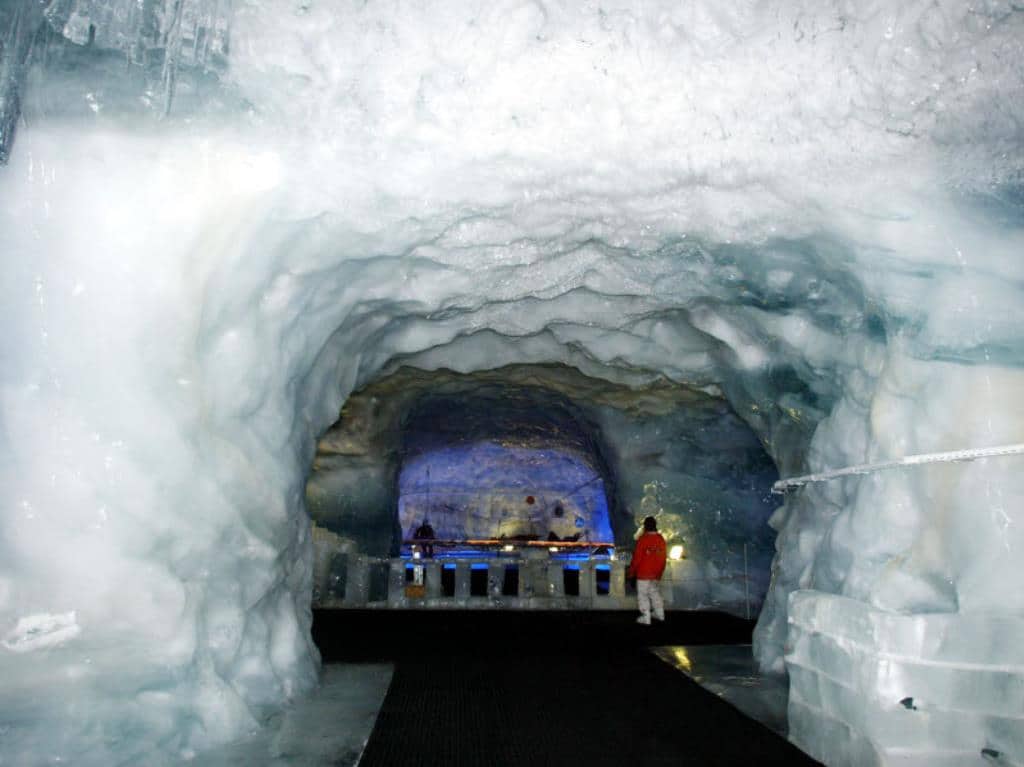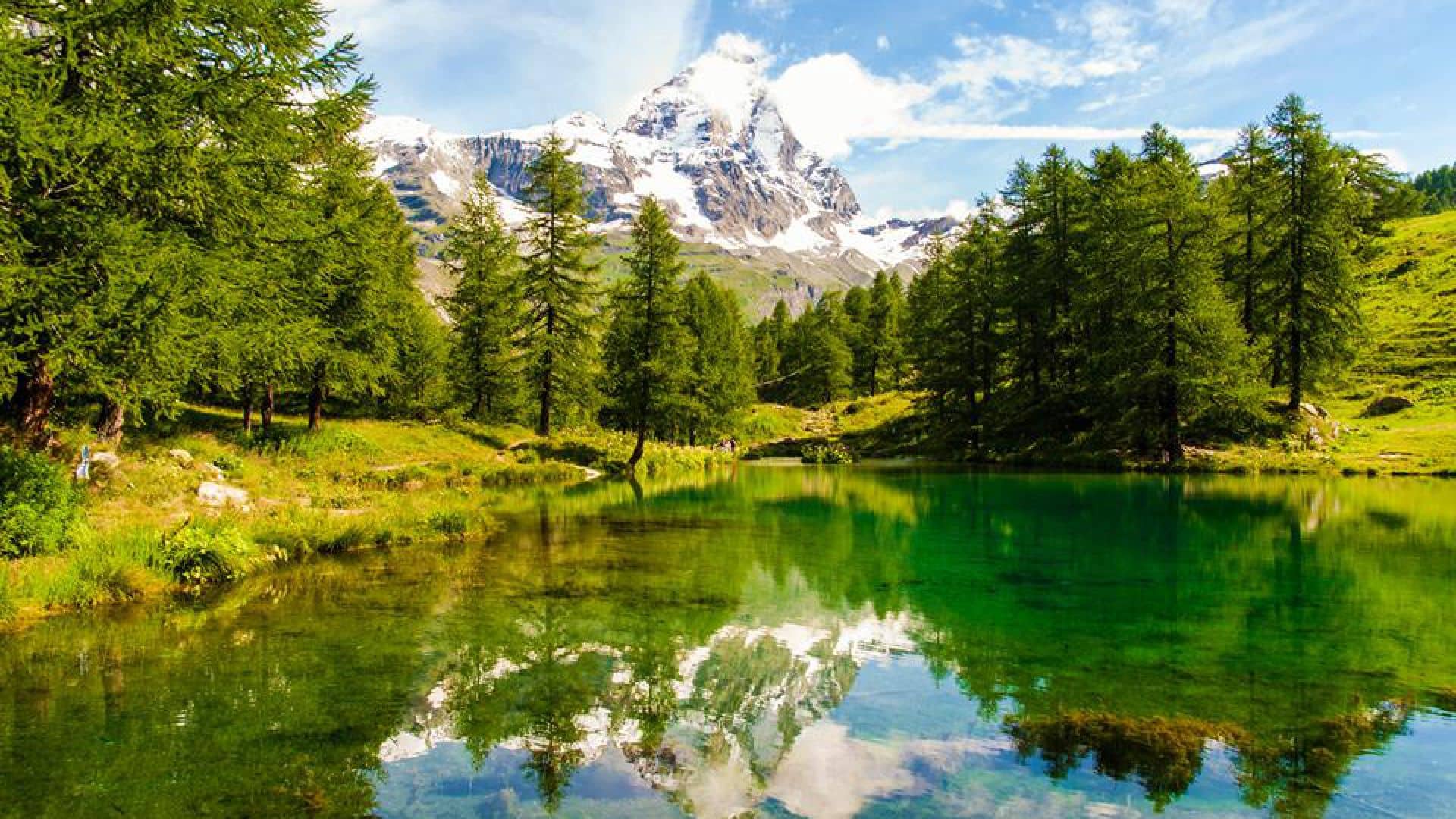Matterhorn: the origins of its name
The name Matterhorn comes from the German and means "horn in the meadow".
In Italian the name of the mountain is Cervinio. It takes origins from the French "Cervin" and the Latin "Mons Silvanus" ( = "wooded mountain"). Actually, in the past centuries, the weather was mild and the mountain used to be covered by forests.
The starting French name was Servin, that took origins by the Latin name Silvanus, but the map-maker made a mistake writing Cervin. Consequently, the Italian name is Cervino.
In Valtourneneche, the local dialect, the Matterhorn is called Gran Becca, that means "big mountain".

The first climbing on the Matterhorn

The Matterhorn is high 4478 m. It marked significantly the history of alpinism. For over 150 years, this mountain attracts mountaineers and climbers from all over the world.
The first ascent was in 1865 until then the Matterhorn was considered impregnable and it used to tell about bad spirits and mountain demons. Then, on the 14th July that seemed to break to spell: the British Edward Wymper and other six climbing partners conquered the top climbing by the Swiss side. Unfortunately, during the descent there was a tragedy: a rope broke and four of them died. A few days after, another entirely Italian climbing team, conducted by Jean-Antoine Carrel, called The Marksman, climbed the Matterhorn by the Italian side.
The Matterhorn's legend is still today alive. Expert mountaineers from all over the world test compete in its climbing. As it's easy to understand by its story, there are two normal routes to the summit, but both are reserved to expert climbers, escorted by Guide Alpine. The Italian route follows the Cresta del Leone and uses as a base the Carrel Hut, perched on the peak at 3,800 meters.
The Matterhorn Valley

At the foot of the Matterhorn, there is its valley, knowns as Cervinia. It's a Valle d'Aosta Ski Resort, famous for the beauty of its landscapes and the range of its ski runs.
Its full name, Breuil-Cervinia, comes from the Valdostan dialect breuil that means "land of many waters", because of its lots of lakes, streams and waterways that characterized the area of the original settlement of the town. Indeed, Breuil-Cervinia has arisen more than two-hundred years ago at the foot of the Matterhorn, in the valley of Breuil: a huge grassland until then reachable only after hours of walking. Just since the '30s, building the first cableway, it's become one of the most important Ski Resort in Italy and Europe.
But the valley is not just to ski. Since 2003 there is Indianpark: it's more than 400 meters long and 100 meters wide and it is a famous freestyle snowpark for snowboarders and freestyle skiers of every level. Moreover, at Valtournenche there is Wild West Park, a permanent circuit for skicross and freestyle jumps.
Not far from Cervinia village, there is the wonderful Lake Blue, in which the Matterhorn mirrors itself. Another beautiful lake in the valley is Lake Goillet: it's a suggestive artificial lake at an altitude of 2550 m and closed by a dam. It's used for hydroelectric power production and snow-making on the slopes.
The Matterhorn on cable car

If you are in Breuil-Cervinia and you want to look the Matterhorn in the eyes, then go all the way up to the Plateau Rosà, known as the skiing paradise. With the cable car, you can reach the ski area, but this is an experience not to be missed also for those who do not ski and want to enjoy the high mountains, with clear skies, the bright light of the sun and crisp air.
From the terrace, you can behold all of the tallest peaks of the Alps: the views of the Matterhorn are amazing, but you can also see the profiles of Mont Blanc and the Gran Paradiso, the Mount Rosa massif and the peaks of the Valais in Switzerland before turning your gaze back to Italy and laying your eyes over the iconic pointy shape of Monviso, in Piedmont. A spectacular show that is worth discovering even from the nearby museum "A Mountain of Work" where a solid bronze information plaque lists the directions, names, and heights of all the peaks above four-thousand meters in the area, as well as the most famous ones.
You can also stay at the Guide del Cervinio mountain hut, which is situated in a strategic location, the Testa Grigia, a great base for sports activities like climbing, trekking and skiing.
It seems like reaching the top of the world, but gazing across the border, which you will go through when you exit the cable car, you will discover another world of ice that is even higher up waiting for you. That is the ice cave of the Klein Matterhorn, which is 15 meters deep and is accessible through a 50-meter tunnel dug in the ice. The lighting and music create a very special atmosphere. In the winter, you can reach the cave only by cable car, while in the summer, you can walk there crossing the glacier with the mountain guides.
Matterhorn in the summer

During the summer, as well as the alpinism, around the Matterhorn, you can go trekking and hiking. Since 2002, you can take part in the Matterhorn Tour: a hiking trail that goes around the Matterhorn, across 10 Swiss and Italian spots.
In the area, you can go on the mountain bike and paragliding too. For extreme sports lovers, there are an exiting fixed rope route and good rock-climbing.
For the golf lovers, in Cervinia, there is the Matterhorn Golf Club with its 18 holes. It was founded in 1955 and it's one of the highest golf courses in the world: it's located at a height of 2050 metres. In the winter, the golf courses' circuit becomes a slope for the cross-country skiing.
About the author
Written on 23/11/2020



Ludovica Poliero
Most of the children draw mountains just like pyramids. That's just the way the Matterhorn is! A perfect mountain that stands out on enchanting valley (Valtournenche): isolated from the rest of the Alpine ridge and meeting point between Italy and Switzerland.